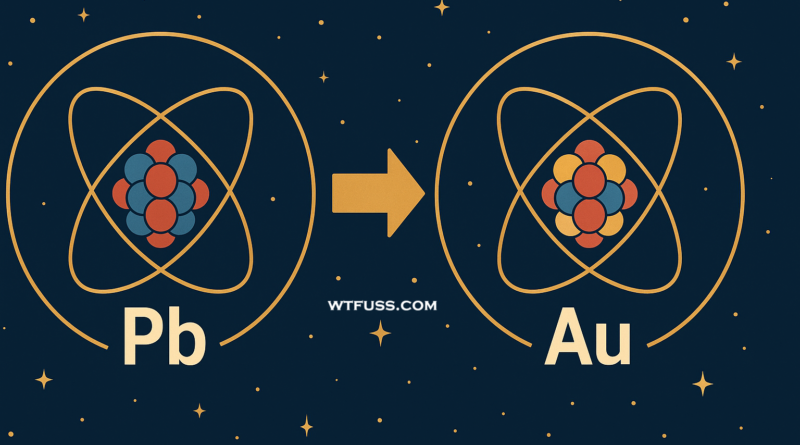Yes, They Turned Lead Into Gold. No, You’re Not Dreaming!
Yes, you heard that right!!! They have Literally turned Lead into Gold!!!
In a feat that would make medieval alchemists green with envy, scientists at CERN’s Large Hadron Collider (LHC) have achieved the transmutation of lead into gold.
The ALICE (A Large Ion Collider Experiment) team at CERN managed this transformation by accelerating lead nuclei to near-light speeds and orchestrating near-miss collisions. These ultra-peripheral interactions generated intense electromagnetic fields, stripping three protons from the lead nuclei and resulting in gold nuclei.
During Run 2 of the LHC (2015–2018), approximately 86 billion gold nuclei were produced. While that number sounds impressive, it amounts to a mere 29 picograms (2.9 ×10^-11 grams) of gold. To put it in perspective, that’s about 1/30th the weight of a single human eyelash.
Even if you could somehow collect this gold, you’d need to be faster than The Flash. These gold nuclei existed for just a tiny fraction of a second before disintegrating upon colliding with parts of the LHC infrastructure.
Considering the LHC’s construction cost of around $4.75 billion and its annual operating expenses, producing gold this way isn’t exactly cost-effective. In fact, synthesizing gold through such methods is estimated to be a trillion times more expensive than its market value. So, before you start dreaming of endless riches, it’s worth noting that this gold existed for only a fleeting moment and in quantities so minuscule that they wouldn’t even cover a flea’s toenail.
While the dream of turning lead into gold has technically been realized, the practical implications are negligible. This achievement serves more as a testament to human curiosity and the capabilities of modern science than a viable method for gold production. So, unless you’re planning to build your own particle accelerator, it’s probably best to stick with traditional means of acquiring gold.



